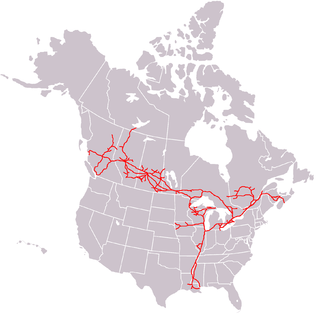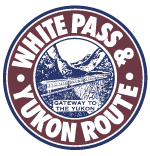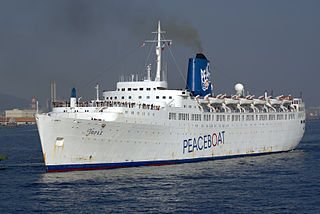
The Canadian Pacific Railway, also known simply as CPR or Canadian Pacific and formerly as CP Rail (1968–1996), was a Canadian Class I railway incorporated in 1881. The railway was owned by Canadian Pacific Railway Limited, which began operations as legal owner in a corporate restructuring in 2001.

The Pacific Electric Railway Company, nicknamed the Red Cars, was a privately owned mass transit system in Southern California consisting of electrically powered streetcars, interurban cars, and buses and was the largest electric railway system in the world in the 1920s. Organized around the city centers of Los Angeles and San Bernardino, it connected cities in Los Angeles County, Orange County, San Bernardino County and Riverside County.

The Canadian National Railway Company is a Canadian Class I freight railway headquartered in Montreal, Quebec, which serves Canada and the Midwestern and Southern United States.

BNSF Railway is the largest freight railroad in the United States. One of six North American Class I railroads, BNSF has 36,000 employees, 33,400 miles (53,800 km) of track in 28 states, and over 8,000 locomotives. It has three transcontinental routes that provide rail connections between the western and eastern United States. BNSF trains traveled over 169 million miles in 2010, more than any other North American railroad.

The White Pass and Yukon Route is a Canadian and U.S. Class III 3 ft narrow-gauge railroad linking the port of Skagway, Alaska, with Whitehorse, the capital of Yukon. An isolated system, it has no direct connection to any other railroad. Equipment, freight and passengers are ferried by ship through the Port of Skagway, and via road through a few of the stops along its route.

Strathclyde Partnership for Transport (SPT) is a regional transport partnership for the Strathclyde area of western Scotland. It is responsible for planning and coordinating regional transport, especially the public transport system in the area, including responsibility for operating the Glasgow Subway, the third-oldest in the world.

The Atchison, Topeka and Santa Fe Railway, often referred to as the Santa Fe or AT&SF, was one of the largest Class 1 railroads in the United States.

The Port of Liverpool is the enclosed 7.5-mile (12.1 km) dock system that runs from Brunswick Dock in Liverpool to Seaforth Dock, Seaforth, on the east side of the River Mersey and the Birkenhead Docks between Birkenhead and Wallasey on the west side of the river. The port was extended in 2016 by the building of an in-river container terminal at Seaforth Dock, named Liverpool2. The terminal can berth two 14,000 container Post-Panamax ships.

The Columbia and Cowlitz Railway is a short-line railroad owned by Patriot Rail Corporation, and is headquartered in Longview, Washington. The railroad serves an 8.5 miles (13.7 km) route from the Weyerhaeuser Company mill in Longview to the junction just outside the city limits of Kelso. From there, traffic is either switched to the Patriot Woods Railroad, formally known as the Weyerhaeuser Woods Railroad, where it is transported to Weyerhaeuser's Green Mountain Sawmill at Toutle or it is switched to the BNSF/Union Pacific joint main line for movement to either Portland, Oregon, or Seattle, Washington.

Amtrak has used a variety of paint schemes (liveries) on its rolling stock since taking over intercity passenger rail service in the United States in 1971. A series of seven schemes termed Phases, first introduced in 1972, have seen the widest use. Phases primarily use geometric arrangements of red, white, and blue—the national colors of the United States—part of Amtrak's patriotic visual identity.

The British Rail Class 20, otherwise known as an English Electric Type 1, is a class of diesel-electric locomotive. In total, 228 locomotives in the class were built by English Electric between 1957 and 1968, the large number being in part because of the failure of other early designs in the same power range to provide reliable locomotives.

CP Ships was a large Canadian shipping company established in the 19th century. From the late 1880s until after World War II, the company was Canada's largest operator of Atlantic and Pacific steamships. Many immigrants travelled on CP ships from Europe to Canada. In 1914 the sinking of the Canadian Pacific steamship RMS Empress of Ireland just before World War I became largest maritime disaster in Canadian history. The company provided Canadian Merchant Navy vessels in World Wars I and II. Twelve vessels were lost due to enemy action in World War II, including the RMS Empress of Britain, which was the largest ship ever sunk by a German U-boat.
This article contains a list of terms, jargon, and slang used to varying degrees by railfans and railroad employees in the United States and Canada. Although not exhaustive, many of the entries in this list appear from time to time in specialist, rail-related publications. Inclusion of a term in this list does not necessarily imply its universal adoption by all railfans and railroad employees, and there may be significant regional variation in usage.

RMS Empress of Britain was a transatlantic ocean liner built by Fairfield Shipbuilding at Govan on the Clyde in Scotland in 1955-1956 for Canadian Pacific Steamships (CP). This ship — the third of three CP vessels to be named Empress of Britain — regularly traversed the trans-Atlantic route between Canada and Europe until 1964, completing 123 voyages under the Canadian Pacific flag.

MS Golden Princess was a casino cruise ship owned by Eurasia International, operated on short casino cruises out of Hong Kong. She was built in 1967 by the Wärtsilä Hietalahti shipyard in Helsinki, Finland as Finlandia for the Finland Steamship Company. In 1975 she was sold to Finnlines, who converted her into the cruise ship Finnstar in 1978. In 1982 she entered service for Pearl Cruises as Pearl of Scandinavia. In 1988 she was renamed Ocean Pearl. In 1994 she entered service with Croisières Paquet as Pearl. Between 1995 and 1998 she sailed for Costa Cruises as Costa Playa. In 1998-1999 she sailed as Oriental Pearl for Mega Wave International, and in 1999-2000 as Joy Wave for Costa Cruises. In 2000 she was sold to Eurasia International and entered service under the name Golden Princess. In 2009 she was sold for scrap to China.
The lines of the Canadian Pacific Railway operated in the State of Maine were set up as a separate company to comply with Interstate Commerce Commission regulations and were considered a Class I U.S. railroad. The company operated 234 miles in Maine.
The Algoma Eastern Railway was a railway in Northeastern Ontario, Canada. Originally known as the Manitoulin and North Shore Railway (M&NS) with a charter dating back to 1888, the full mainline was opened to traffic in 1913, serving the area along the north shore of Lake Huron between Sudbury and Little Current on Manitoulin Island. It and its sister railway, the Algoma Central, were originally owned by the Lake Superior Corporation, a conglomerate centered on Sault Ste. Marie which was founded by the American industrialist Francis Clergue. Despite ambitious plans to expand across Lake Huron to the Bruce Peninsula using a railcar ferry, the company failed to develop further and was acquired by the Canadian Pacific Railway in 1930. With freight traffic low during the Great Depression, Canadian Pacific soon abandoned much of the Algoma Eastern mainline in favor of its own Algoma Branch. Remaining sections of the Algoma Eastern line were turned into spurs, with the longest surviving section operated as a branch line known as the Little Current Subdivision.

The history of the Canadian Pacific Railway dates back to 1873. Together with the Canadian Confederation, the creation of the Canadian Pacific Railway was a task originally undertaken as the "National Dream" by the Conservative government of Prime Minister John A. Macdonald. He was helped by Alexander Tilloch Galt, who was the owner of the North Western Coal and Navigation Company. British Columbia, a four-month sea voyage away from the East Coast, had insisted upon a land transport link to the East as a condition for joining Confederation, after initially requesting a wagon road.
















